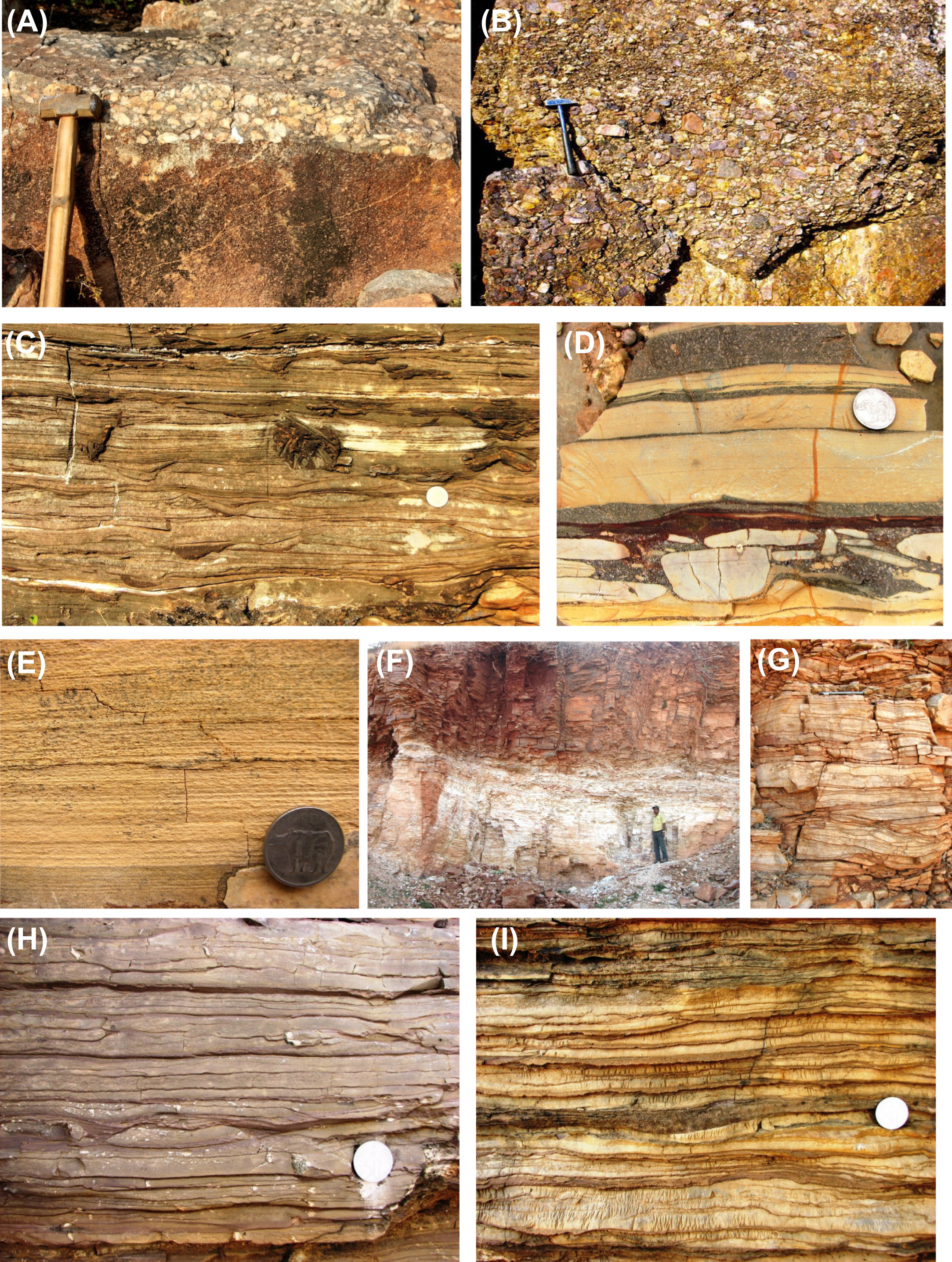Kurnool Gr
Type Locality and Naming
The Kurnool Group, youngest of the Proterozoic suites in the Cuddapah basin is best developed in the Kurnool and Palnad sub-basins. The Kurnool Group is much thinner (cumulative thickness of about 500-600 m), compared to the older Chitravati Gr and Papaghni Gr, but the outcrop extent of the flat-lying Kurnool rocks is quite extensive.
Lithology and Thickness
Sandstone, Limestone and Shale: Upward succession of Banganapalli Quartzite Fm, Narji Limestone Fm, Owk Shale Fm, Koikuntala Limestone Fm, and upper Nandyal Shale Fm. Over 500 m total thickness.
[Field photographs showing lithology and sedimentary features in the Kurnool Group. Banganapalle Quartzite Fm – (A) basal conglomerate of overlying granitic basement, and (B) thick matrix supported polymict conglomerate with apparent size grading. Narji Limestone Fm - (C) lower part with thin wavy bedded impure limestone, and (D) glauconitic sandstone interbeds in limestone; note pockets of lime pebble conglomerate. Owk Shale Fm - (E) Thinly laminated ash beds, and (F) transition from Owk Shale (lower half of photo) to Paniam Quartzite Fm. Paniam Quartzite Fm - (G) truncated wavy lamination. Koilkuntla Limestone Fm - (H) thin bedded argillaceous limestone, and (I) impure limestone-shale intercalation within the Koilkuntla Limestone Fm to Nandyal Shale Fm transition. (from Saha et al., 2016)]
Relationships and Distribution
Lower contact
Unconformity, onto Srisalam Fm with Kimberlite pipes Fm of ca. 1090 Ma.
Upper contact
Not given
Regional extent
A major unconformity separates the older Cuddapah Supergroup from the younger Kurnool Group developed in two separate sub-basins, the Kurnool sub-basin in the west and the Palnad sub-basin in the northeastern part of the crescent shaped intracratonic Cuddapah basin. The plateau forming Srisailam Quartzite Fm separates the Kurnool and Palnad sub-basins.
GeoJSON
Fossils
Age
Depositional setting
Three main cycles of continental alluvial-fluvial deepening upward to subtidal or outer shelf. The two older Paleoproterozoic successions, each representing fluvial / shallow-marine psammite / pelite / carbonate deposition, are punctuated at different levels by mafic flow, sill, and dyke and less commonly felsic tuff. Development of extensive carbonate platforms with dolomitic stromatolite and algal laminite marks each of the cycles.
Additional Information
